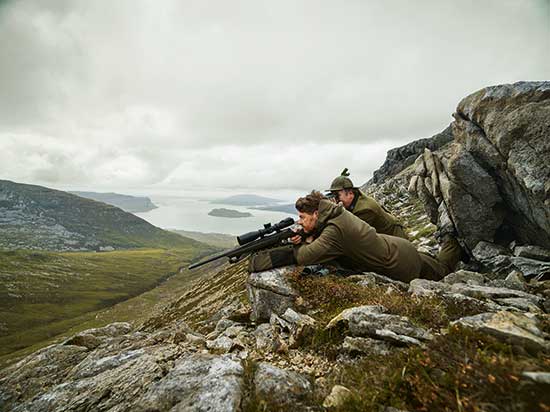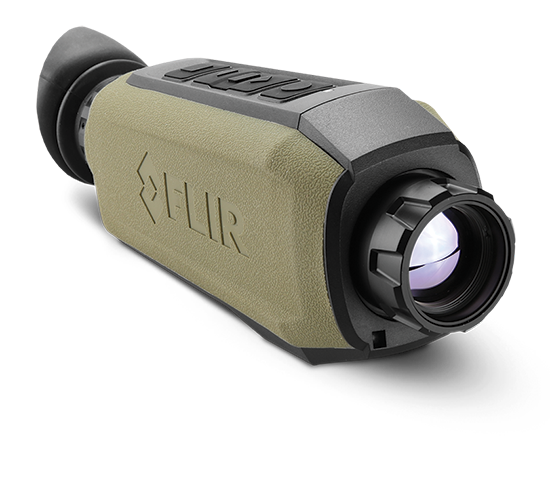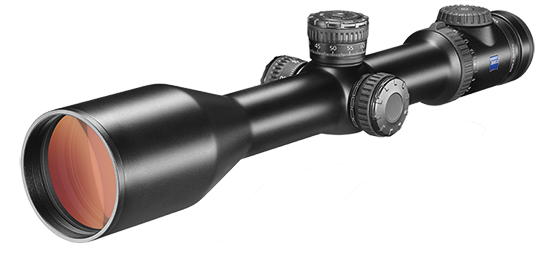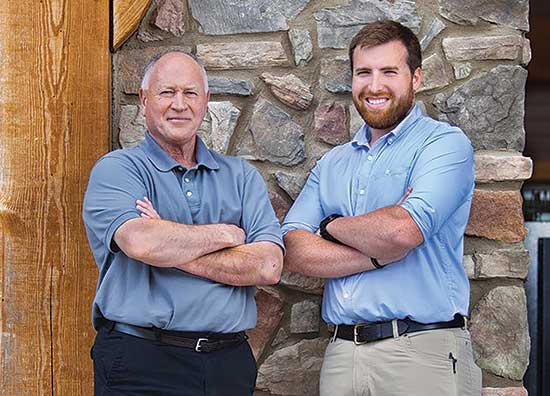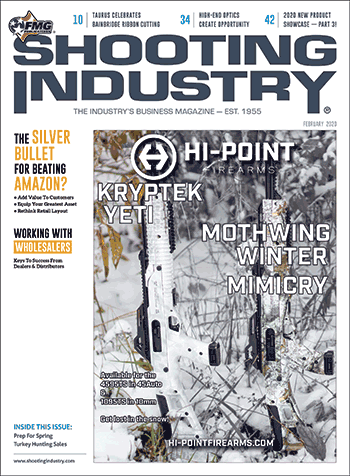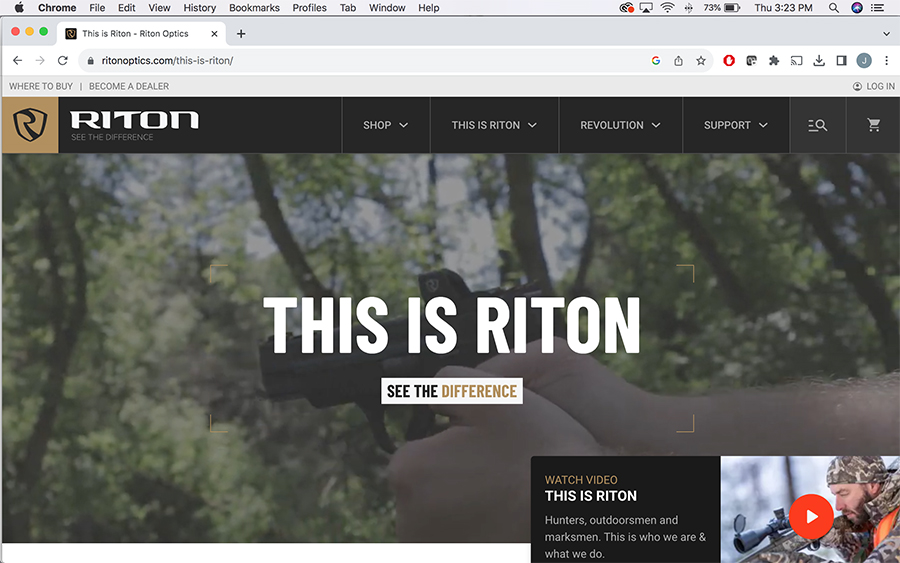Selling High-End Optics
The increasing popularity of long-range shooting has spurred more than sales of just firearms and ammunition. As shooters have reached for longer and longer distances, rifles, ammunition and optics all have had to step up and keep up. Optics companies are focusing on better clarity, distance and accuracy.
Category Leaders
“Long-range shooting has grown significantly the last few years, with a lot more people going to the range and shooting at longer distances,” said Mark Whitlock, owner of Mark’s Outdoors in Vestavia, Ala. “It’s a change in the use of firearms, another kind of recreation or pastime. Instead of joining the golf club or the country club, people are becoming members of shooting ranges.”
Although long-range shooting is driving this trend, Whitlock noted the needs of hunters are changing for high-end optics.
“We sell a lot of them to guys who go hunting in the mountains of Colorado and Montana, and they don’t mind paying for higher-end optics,” he shared. “They’re paying up to $20,000 on a hunt, so they’re not going to skimp on optics.”
When someone comes in looking for higher-end optics, the Mark’s Outdoors team gets a lot of questions about ballistic turrets and glass quality from customers. The brand they most often seek out is Swarovski, according to Whitlock.
“A lot of people also lean toward the higher-end Leupolds,” he added. “ZEISS is third. Nightforce is also a great company; we sell a lot of those. But Swarovski and Leupold are our two best sellers.” (Whitlock also sells a few higher-end Burris scopes.)
When it comes to specific models, the ZEISS V8 stands out.
“They’re paying up to $20,000 on a hunt, so they’re
not going to skimp on optics.”
Mark Whitlock, OwnerMark’s Outdoors Vestavia, Ala.
“They’re popular, but they’re in the upper end,” Whitlock said. “Swarovski just came out with a new one called the dS, which compensates for bullet drop. It’s a $3,500 optic, so the customer base for it is small, but every one that’s come into the store has sold.”
Whitlock shared the first six dS riflescopes he ordered sold immediately.
“The first batch of three sold as soon as they came in the door,” he recalled. “It continued for about three months, until we finally had one long enough to put it in the case.” In that length of time, Whitlock sold a dozen of the riflescopes.
Customers are using these scopes on a variety of rifles.
“Christensen Arms have been our best-selling rifles for the past two years, and we’re seeing customers putting these scopes on a lot of them,” Whitlock said. “They’re putting them on 6.5 Creedmoor and the new 6.5 PRC. In addition, the .300 Win. Mag. is still a very sought-after caliber.”
A significant subset of Whitlock’s customer base is interested in thermal and night-vision optics.
“The demand for thermal and night vision has seemed to grow in our area in the last two years,” he observed. “We’ve sold Trijicon, ATN, Pulsar and FLIR thermals; the Trijicon thermals have been a great seller even at a price of over $7,000. We recently got a FLIR Thermal for around $2,500 and have sold a few dozen. It’s a great option for the price and holds great value. It might not have all the bells and whistles of the Trijicon but it’s what the average customer is looking for.”
Tech Boon Yields Options
In Yuma, Ariz., Chad Converse is the manager at Sprague’s Sports. He noted manufacturers continue to improve what they’re offering customers.
“Scope manufacturers are getting better at making glass that’s clear and easy to look through — and with good contrast and superior light transmission,” he stated. “They’re giving the shooter what he wants, which is custom dials up top. Whether the shooter wants to shoot MOA or mils — or have a custom turret build by a manufacturer or a third party that gives them yardage — they can dial right to it. Many of these scopes are a lot more turnkey for the shooter and are able to do more work for the shooter so he doesn’t have to learn MOA or mils and spend hours and hours researching it and figuring it out.”
Converse’s customers are taking advantage of improved technology to enhance their shooting skills.
“Everyone wants to shoot farther, whether it’s target shooting or hunting,” he said. “If you can shoot a little farther and more accurately, you’re going to increase your odds of harvesting game and/or winning shooting matches. As technology gets better, the hunter and shooter benefit.”
Like Mark’s, there is a clear winner at the top of Sprague’s high-end optics offerings: the Swarovski DS.
“It’s a laser rangefinder scope with a ballistic calculator,” Converse noted. “There’s an app you download onto your phone that Bluetooths your phone to the scope.”
Once the user enters information about the caliber and load and shoots the gun on the range, the app calculates all sorts of information.
“It gives you the range to the target,” Converse shared. “A dropdown reticle appears as your aiming point. It provides wind holds, and calculates barometric pressure and elevation, and gives you a correct firing solution for that range so there’s no guesswork. It helps the hunter or target shooter be more confident in the shot, and helps the hunter make more ethical kills.”
Customers are using these scopes for a mixture of hunting and target shooting, Converse added.
“I’d say it’s 60% hunting and 40% target shooting,” he said. “A lot of the customers who are using yardage turrets from a manufacturer such as Leupold are hunters. The target shooter seems to be more inclined to buy a scope where the turret is MOA or mil. They’re not worried about having anything in yardage.”
Customers are putting high-end optics on today’s hottest calibers.
“For us, 6.5 Creedmoor is still very popular,” Converse noted. “And 6.5 PRC is gaining a lot of traction. Then you have a lot of the bigger calibers: the .300s and 28 Nosler. And a lot of the popular hunting rounds.”
Converse said neither thermal nor night vision is a big market for Sprague’s Sports.
“They’re very slim for us,” he declared. “In Arizona there’s not a lot of legal hunting you can do with those. In most places you can’t go to a range and shoot at night, or hunt with them. We see little inklings of it, but it’s mostly people who are going somewhere else on a hunt where it’s legal.”
Selling high-end optics can be complicated, and staff members need to understand them before they can sell them.
“It can be very complicated subject matter,” he relayed. “The staff member must be able to explain mil and MOA and a custom turret in yardage. He needs to know first focal plane and second focal plane and how parallax comes into play, because some people don’t really understand what it does and how it can affect your shot.”
Educate Your Staff, Reap The Benefits
Whitlock shared selling high-end optics requires more skill on the part of his staff than selling a more moderately priced scope.
“To be able to sell optics on the high end, it’s necessary for our crew members to be able to use them,” he stated. “I don’t think you can expect someone to sell a $3,000 optic unless they’ve used it themselves.”
Fortunately, Whitlock has good relationships with several sales reps, and his staff members have been able to get some experience with high-end optics at manufacturer-sponsored range days.
“Everyone wants to shoot farther, whether it’s target shooting or hunting.
As technology gets better the hunter and shooter benefit.”
Chad Converse, Manager Sprague’s Sports, Yuma, Ariz.
“Now they can say they’ve actually had their hands on the products, and they’ve shot with them,” he said. “They can show someone else how to make adjustments on them. Again, if you haven’t used it yourself, it’s really hard to sell someone a $3,000 optic.”
Converse said education takes place at Sprague’s weekly Friday morning staff meeting.
“Periodically we have educational classes then,” he said. “We also invite our reps down to give presentations on their products and talk about the technical stuff.” Staff members are encouraged to study information and watch videos on manufacturers’ websites, and take any available classes, and are compensated for the time they spend doing it.
“We also encourage our employees to take advantage of manufacturers’ employee purchase programs,” Converse added. “This way, our guys have a better opportunity to buy these products and get them into their hands. When they use them, they can speak about them with confidence and enthusiasm. They can say, ‘This is what I have on my gun,’ which in turn gives the customer more confidence.”
Bottom Line Boost
High-end optics are expensive, and they’re not for every customer. But having them in the store can give a significant boost to your bottom line.
“Your core customers are buying average or price point scopes, which helps the volume and the bottom line a lot,” Converse closed. “The very high-end optics make a good splash when you sell them. When the customer sees a wider range of optics, and they’re speaking with a salesperson who can clearly explain the features of all the scopes, it gives him or her more confidence in your store.”

